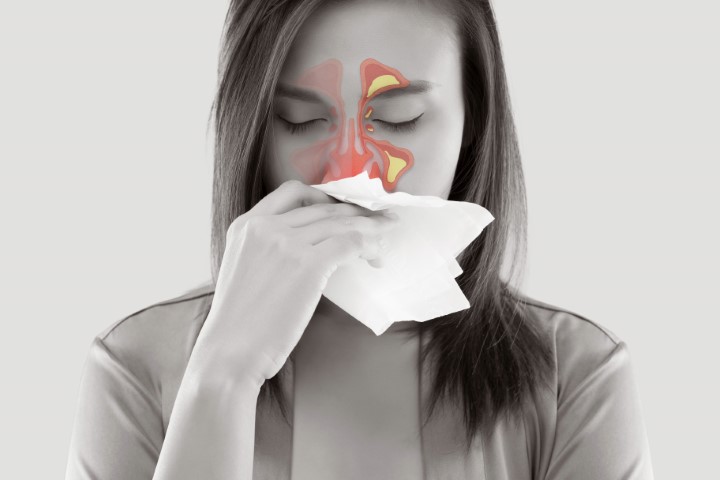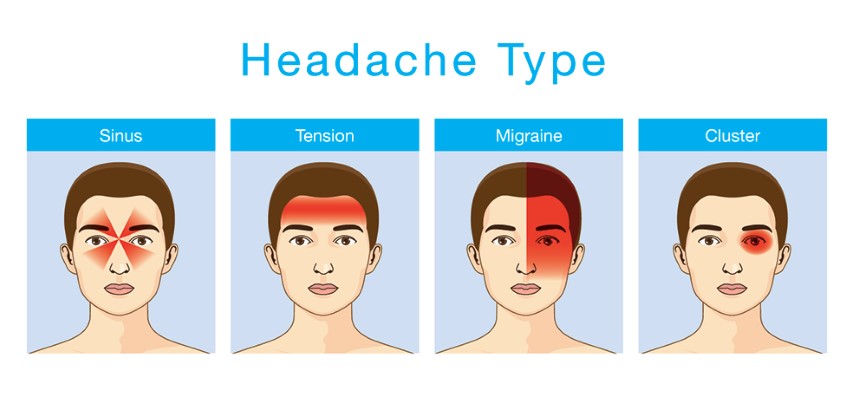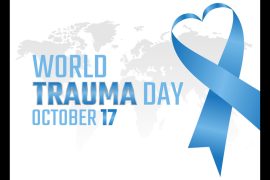Headaches are one of the most prevalent health conditions faced by humans. There are many different types of headaches, with sinus headaches and migraines being the most common ones. The two are often misdiagnosed as both migraine and sinus headaches have similar symptoms such as runny nose and tenderness in the cheeks and forehead. This makes it hard to differentiate between the two. To understand the differences between the two, let us get an overview of sinus headaches and migraines, along with their characteristics.
Sinus Headache
Sinus headaches are characterized by the deep and constant pain in your sinuses and surrounding areas – eyes, cheeks, nose, and forehead. The pain comes with a throbbing sensation, and this is caused when there is an inflammation in the sinuses and the nasal passages. Other indicators, such as runny nose, fever, ear block, and a swollen face, also accompany the sinus headaches. Sinus headache is usually a symptom of sinusitis (sinus infection).
In sinusitis, the sinuses become inflamed, blocking the nasal passages. Healthy sinuses are filled with air, and the fluid buildup within the sinuses causes swelling in the nasal cavity. This can be caused due to viral/bacterial infections or seasonal allergies that last for an extended period.



Symptoms of Sinus Headache
- Pain/pressure in the forehead and cheeks
- Increasing pain on bending forward or lying down
- Runny/stuffy nose
- Tiredness
- Fever
Risk Factors of Sinus Headache
- Seasonal allergies
- Common cold
- Ear infection
- Nasal polyps
- Deviated Nasal Septum
- Weak immune system
- Previous history of sinus headaches
- Family history of migraines/sinus headaches
Migraine
Migraine causes severe, throbbing pain on one side of the head. The pain is more like a pulsing sensation in the head, often accompanied by nausea, photosensitivity, and sensitivity to sound. A migraine attack can last from a few hours to several days, depending on the severity of it, and it may also interfere with one’s daily activities.
A warning symptom, commonly known as an aura occurs before or during the headache. This can include flashes of light, blind spots, a tingling sensation on one side of the face or limb, and speech difficulty.
Symptoms of Migraine
There are four stages of a migraine attack – prodrome, aura, attack, and post-drome. However, not everyone goes to all four stages. The most common symptoms during each stage are:
- Prodrome
- Constipation
- Mood swings
- Food cravings
- Stiffness in the neck
- Frequent yawning
- Aura
- Blind spots
- Loss of vision
- Stinging sensation in the limbs
- The feeling of numbness on one side of the body
- Speech difficulty
- Attack
- Immense pain on one side of the head
- Throbbing ache
- Photosensitivity
- Sensitivity to sound
- Nausea
- Post-drome
- Fatigue
- Lightheadedness
- Sudden pain while moving the head
Migraine Risk Factors
- Family history of migraines
- Age (Migraine often occurs first during adolescence and peaks during the 30s)
- Hormonal changes
- Skipping meals
- Smoking
- Depression or anxiety
- Alcohol abuse
How can you differentiate between a Sinus Headache and a Migraine?
According to research, many people diagnosed with sinus headaches are usually experiencing a migraine attack. While telling the two conditions apart, the most important factors to consider are the symptoms and the timing, based on which the right treatment is given.
While some of the common symptoms of both sinus headaches and migraines include a running nose, watery eyes, and tenderness/pressure on the forehead, various other symptoms set them apart.
In case of a sinus headache, the mucus discharge will be yellowish, while the drainage will be clear in case of a migraine. Sinus headaches are often accompanied by fever and bad breath, while a migraine may cause nausea, dizziness, fatigue, and sensitivity to light. Women are much more prone to migraine attacks as compared to men.
Apart from the symptoms, it is important to note the timing of the headache. If the headache occurs after infections such as the common cold or flu, or after allergic reactions, it is most likely to be a sinus headache. However, if the headache occurs after consuming certain foods/alcohol, highly stressful situations, skipping a meal, insomnia, or other lifestyle-related factors, it is a migraine attack.
To diagnose a sinus headache or migraine, your doctor will ask you specific questions related to your headaches such as the frequency at which they occur, the symptoms you experience, the timing/triggers, and the family history. The doctor may also suggest physical examination, blood tests, or imaging tests for accurate diagnosis.
Treatment for sinus headache/sinusitis includes self-care measures such as steam inhalation, usage of nasal wash, nasal irrigation, and over-the-counter (OTC) medications. If the condition is severe, the doctor might prescribe corticosteroids, antibiotics, or surgery.
The treatment for migraine attacks is divided into two – acute treatment and preventive treatment. The acute treatment aims at easing the symptoms to provide relief such as moving to a cool and darkroom, cold compress, fluid consumption, OTC pain relievers, and anti-nausea medications. Preventive treatment includes various lifestyle changes such as a regular exercise regime, stress management, regular sleep schedule, avoiding exposure to triggers, and more.
Be it sinus headache or migraine attacks, the most important step towards nipping it in the bud is to be aware of the symptoms and approach your healthcare provider for the right diagnosis. Though treatment methods are available to relieve the symptoms, one can be mindful of the risk factors and avoid exposure to triggers, for prevention is better than cure!





Comments are closed.